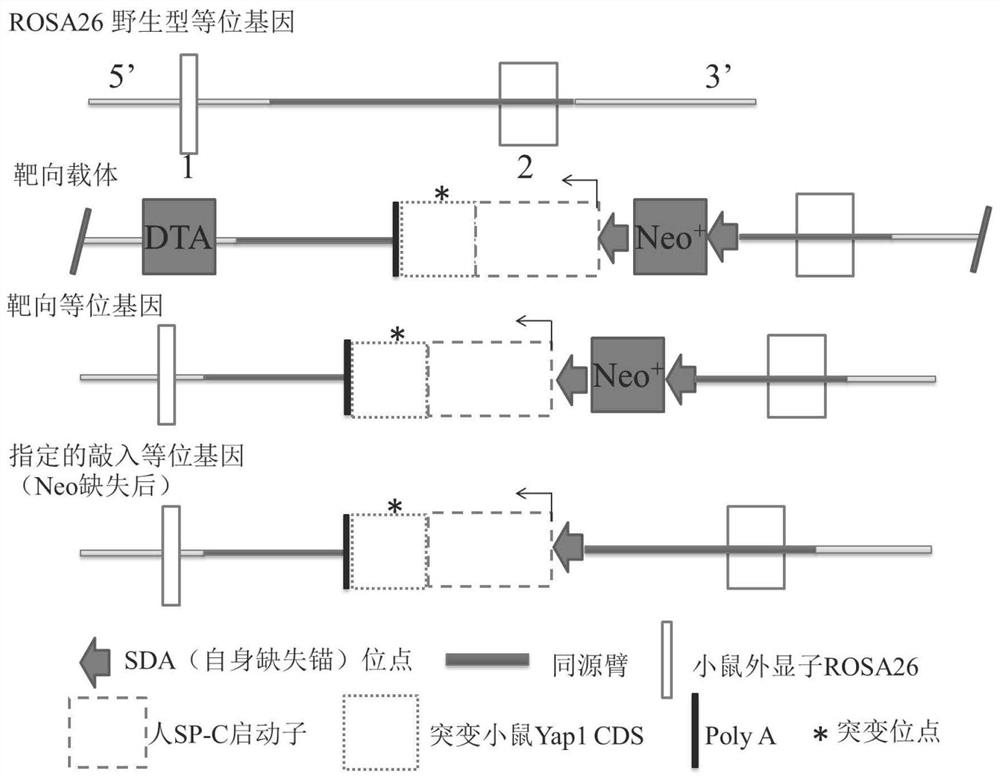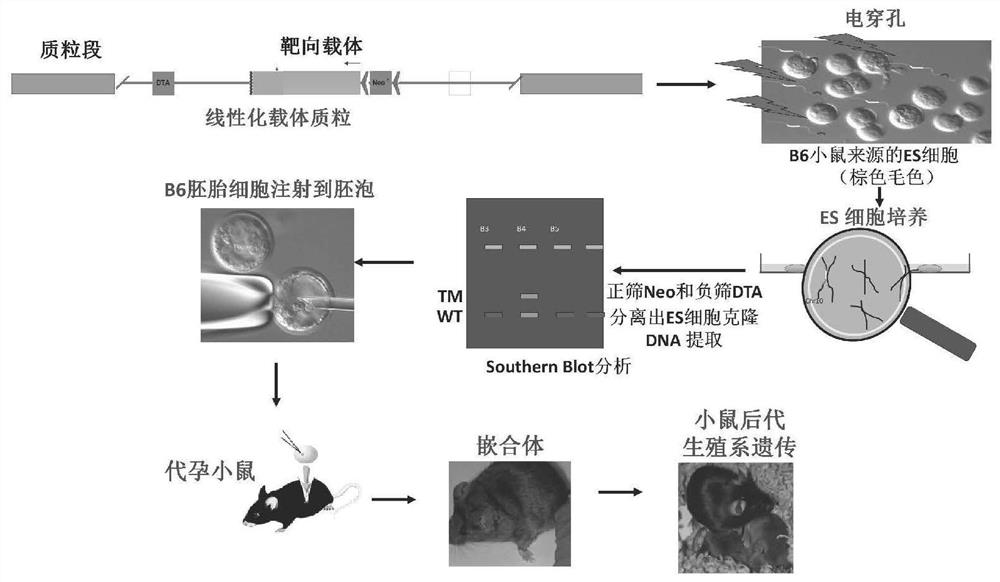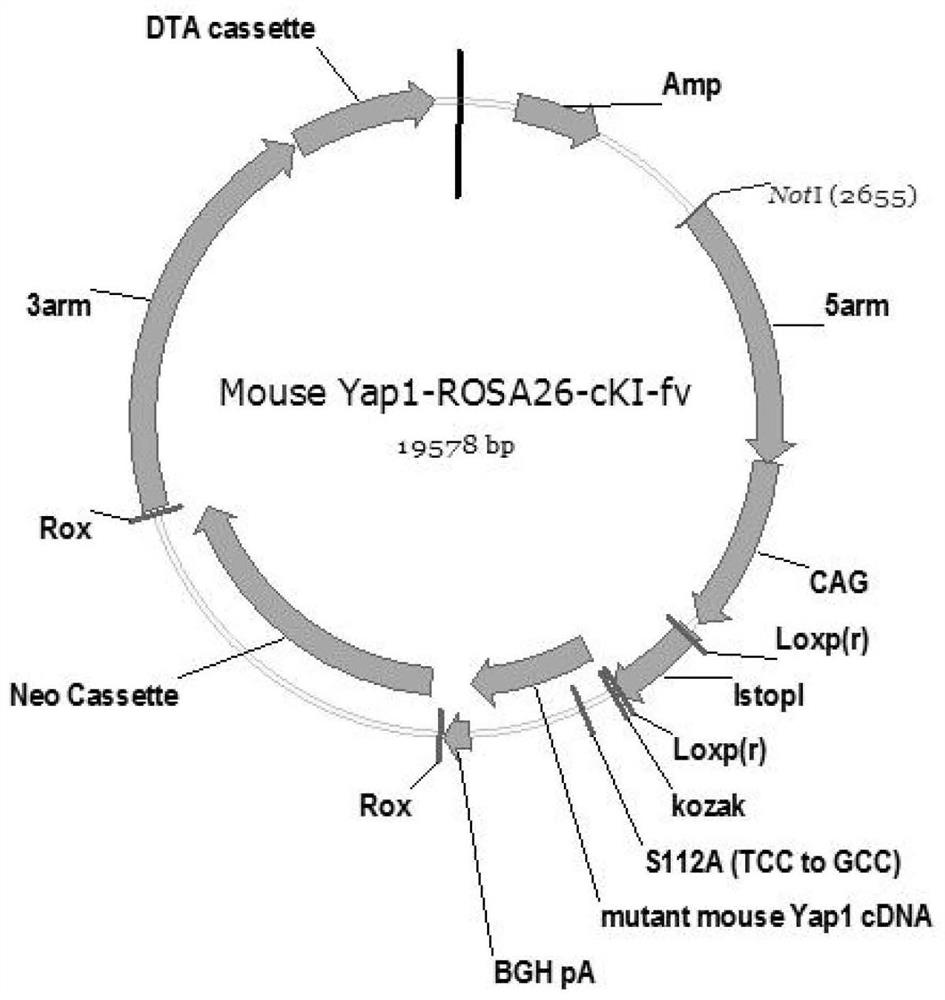A method for constructing a mouse model of spontaneous lung squamous cell carcinoma
A technology for constructing methods and mouse models, which can be applied to other methods of inserting foreign genetic materials, chemical instruments and methods, and botanical equipment and methods, etc., and can solve the problem of animals that are not specific for lung squamous cell carcinoma and lack oncogenes Impure models, histopathological types of spontaneous tumors, etc.
- Summary
- Abstract
- Description
- Claims
- Application Information
AI Technical Summary
Problems solved by technology
Method used
Image
Examples
Embodiment 1
[0054] 1. Design and construction of conditional Yap1 knock-in targeting vector: A mouse Yap1 conditional knock-in model was established in C57BL / 6 mice. (See figure 1 and figure 2 )
[0055] 1. Vector construction:
[0056] (1) Order BAC, and prepare the primers required for vector construction; (2) Extract BAC by shaking the bacteria, and prepare the basic vector plasmid (KI431-basic vector); (3) PCR amplify the target fragment Yap1 from BAC DNA, and detect the amplification by electrophoresis. Amplify the product, cut the gel to recover the target fragment; (4) connect the target fragment to the basic vector (cut the basic vector with pmlI and KpnI); (5) transform the ligated product into a competent state, spread it on a plate and culture it overnight; (6) pick a single colony , positive clones were screened by colony PCR; (7) small plasmids were extracted from colony PCR positive clones, and identified by enzyme digestion; (8) positive clones identified by enzyme dige...
PUM
 Login to View More
Login to View More Abstract
Description
Claims
Application Information
 Login to View More
Login to View More - R&D
- Intellectual Property
- Life Sciences
- Materials
- Tech Scout
- Unparalleled Data Quality
- Higher Quality Content
- 60% Fewer Hallucinations
Browse by: Latest US Patents, China's latest patents, Technical Efficacy Thesaurus, Application Domain, Technology Topic, Popular Technical Reports.
© 2025 PatSnap. All rights reserved.Legal|Privacy policy|Modern Slavery Act Transparency Statement|Sitemap|About US| Contact US: help@patsnap.com



